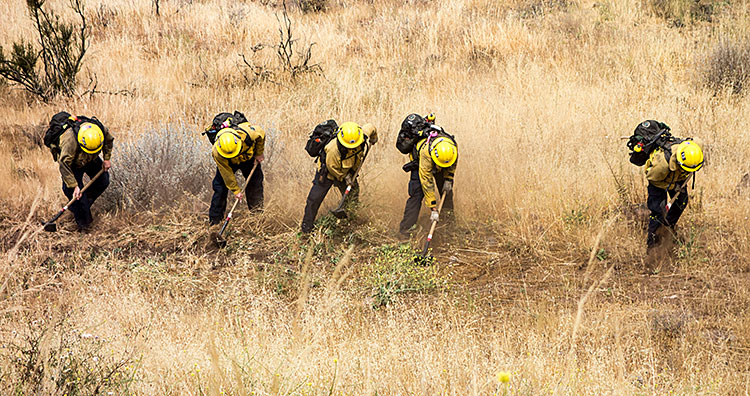By Angie Gruys
As part of the Resource Conservation District’s Forest Health and Wildfire Resiliency program, we have been working with Cal Fire and other stakeholders to identify and prioritize landscape scale projects in areas considered to be at high-risk for wildfire.
This latest award of $970,000 will fund the Lockhart shaded fuel break, in one of those recognized critical hot spots.
This vital project will create defensible space around the high-fire risk communities of Felton and Scotts Valley to improve ingress/egress route safety in the event of wildfire and allow easier access for firefighters.
Extending from Graham Hill Road to Upper Zayante in the heart of the San Lorenzo River watershed, the project area has two large tributaries, Zayante Creek and Bean Creek on either side. The San Lorenzo River is a vital drinking water resource for the City of Santa Cruz providing most of their supply. Additionally, the 180-acre Olympia Watershed property to the west of the project area is owned by the San Lorenzo Valley Water District and provides an important source of groundwater to their customers.
Reducing future wildfire risks will help protect these important drinking water resources.
“Fire is a major concern for the San Lorenzo Valley Water District and its communities.” says Rick Rodgers, the Water District’s Manager. “In the past PG&E, illegal activities, and natural disasters have triggered major fire events. The Lockhart shaded fuel break is incredibly important not only for water supply but also for protection of surrounding neighborhoods.”
Three different areas of the project are within protected Santa Cruz sandhills, which are unique to Santa Cruz County, and require extra care, planning and permitting. Work of this scale often crosses numerous property lines and needs the cooperation of those whose lands might be impacted.
This undertaking is possible because of the collaboration and support of the Land Trust of Santa Cruz County, San Lorenzo Valley Water District, the City of Santa Cruz Water Department, and the private landowners in the project area.
“The Land Trust has a vested interest in the project area, having protected nearly 500 acres for multiple conservation benefits including rare sandhills and wildlife movement,” says Matt Timmer, natural resource manager at the Land Trust of Santa Cruz County. “We are encouraged to see this important project move forward and will work with the partners to ensure that the conservation values of these lands are protected during the project. The Lockhart shaded fuel break will make our communities safer and potentially set the stage for more hands-on habitat restoration work in the future.”
Fire suppression and old logging practices have shaped the current state of forests in Santa Cruz County, which are now more prone to catastrophic wildfire.
Projects like this will showcase how well-planned collaborative efforts can rebuild healthy forest ecosystems.
“Our long-term goal is to mimic historical landscapes with fewer but larger and healthier trees, that can more effectively endure the impacts of drought and wildfire,” explains Angie Richman, forest health specialist with the Resource Conservation District. “It can’t happen overnight, but the steps that we take today are critical to building the healthy forests of tomorrow.”
Project planning and permitting is expected to be completed next summer with construction beginning in the spring of 2024.
For information on the RCDSCC’s Forest Health and Wildfire Resiliency program and services, visit www.rcdsantacruz.org/forest-management-and-stewardship.
●●●
Established in 1942, the RCD is a locally governed special district and one of the oldest environmental organizations in the County.

